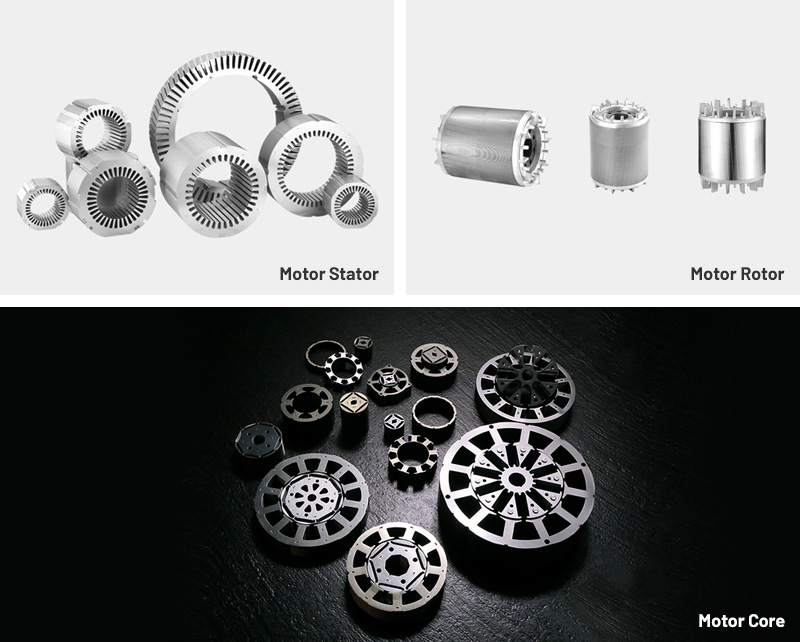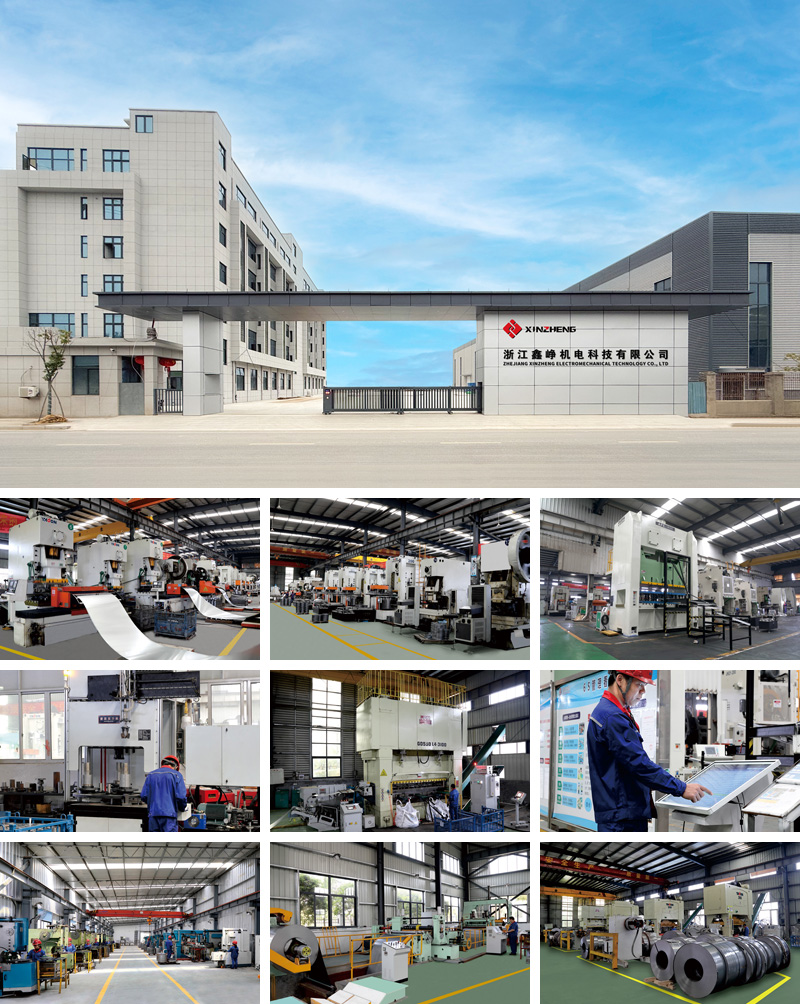Industrial motors remain the driving force of manufacturing, utilities, and process engineering. As production systems shift toward higher efficiency and flexible operation, dual-speed motors continue to play a critical role in pumps, fans, compressors, and general mechanical equipment. These motors require robust magnetic cores capable of maintaining torque output and operational stability under different load profiles and frequent switching cycles.
The YD2 series of industrial motor rotor laminations is designed specifically for motors that operate in Dahlander or dual-winding speed configurations. With increasingly strict energy-efficiency regulations in Europe and North America, rotor lamination performance has become a determining factor in meeting system-level efficiency targets. Manufacturers and end users are therefore paying closer attention to core loss behavior, mechanical durability, and material consistency in the lamination stack.
Rotor laminations form the magnetic core of squirrel-cage rotors used in industrial induction motors. Their function is to guide magnetic flux, reduce eddy-current losses, and maintain structural integrity during high-speed operation. The YD2 configuration requires additional consideration due to frequent transitions between low-speed and high-speed modes.
Key engineering principles include:
The laminated steel sheets minimize circulating currents by dividing the core into thin insulated segments. This structure enhances magnetic permeability while controlling heat buildup during speed switching.
Total core loss—hysteresis loss plus eddy-current loss—is influenced by steel grade, lamination thickness, surface insulation, and stamping precision. Optimized rotor laminations directly support efficiency compliance in industrial motor systems.
Rotor stacks experience repeated mechanical stress from rotational inertia, centrifugal forces, and thermal expansion. The YD2 series design emphasizes slot symmetry, balanced mass distribution, and reliable interlocking to maintain structural rigidity.
Dual-speed operation results in fluctuating thermal loads. Material composition and insulation coatings must ensure stable performance under elevated temperatures without degrading magnetic or mechanical properties.
The YD2 series of industrial motor rotor laminations follows a standardized structural layout suitable for two-speed induction motors. The main characteristics include:
Most laminations use non-oriented electrical steel with silicon content optimized for magnetic performance. Typical thickness ranges from 0.35 mm to 0.50 mm depending on motor frame size and efficiency requirements. Material properties that matter include:
Permeability consistency
Coercivity
Resistivity
Grain orientation
Yield strength
These properties determine the rotor’s ability to support torque generation and maintain consistent performance across speed levels.
Slot shape affects rotor current distribution, harmonic behavior, and temperature rise. For YD2 motors, rotor slot designs typically prioritize:
High starting torque
Reduced rotor bar stress
Balanced flux density between high-speed and low-speed winding configurations
The core geometry also includes skew angles that reduce noise and torque ripple.
Performance is highly dependent on lamination precision and surface quality. The typical processes include:
High-speed punching dies shape the electrical steel sheets. Dimensional accuracy ensures uniform slot width, which is essential for rotor bar casting and dynamic balance.
Rotor laminations may be stacked using cleats, interlocking tabs, or laser welding. Each method influences rigidity, vibration tolerance, and allowable thermal expansion.
Insulating films—often inorganic or hybrid coatings—are applied to control interlaminar currents. Coating durability directly influences the motor’s heat management capability.
Post-stack machining ensures that the rotor core meets final dimensional requirements before the aluminum casting process forms the squirrel cage.
Manufacturing consistency is essential. The following factors have the greatest impact on the performance of YD2 rotor laminations:
Steel purity, silicon content, and rolling method strongly influence magnetic behavior and core loss.
Burr height, die wear, and tool alignment affect both insulation coating integrity and slot tolerances.
Poor stacking pressure produces gaps, increasing vibration and reducing magnetic coupling.
Weak adhesion leads to hotspots or short circuits between layers.
Inaccurate slot shapes affect rotor bar filling, causing imbalance, harmonic distortion, and reduced efficiency.
Industrial motor manufacturers often evaluate lamination suppliers based on:
Suppliers must provide documentation linking electrical steel batches to chemical composition and magnetic parameters.
High-quality progressive dies support long-term dimensional accuracy with minimal burr formation.
Reliable suppliers typically implement:
Core loss testing
Insulation coating thickness measurement
Laser dimensional inspection
Rotor dynamic balance evaluation
Large motor manufacturers require consistent delivery schedules, stable capacity, and standardized packaging for international shipping.
Common standards include IEC motor frame regulations and ISO quality certifications relevant to electrical steel processing.
Despite steady technological advancement, several challenges remain in rotor lamination production:
Different batches of electrical steel can cause inconsistent motor performance. Steel grade fluctuations require careful control.
Tool wear increases burr height, which can damage insulation coatings or reduce stacking quality.
Unbalanced slot geometry or uneven stacking often leads to noise, vibration, and premature bearing wear.
Frequent switching between speeds exposes the core to thermal cycling, increasing the demand for stable coatings and materials.
Inefficient stamping patterns raise production costs and reduce economic efficiency in high-volume manufacturing.
The YD2 series of industrial motor rotor laminations is widely utilized in equipment requiring flexible speed control, such as:
Industrial pumps used in variable-flow systems
Ventilation and exhaust fans with dual-speed requirements
Compressors operating under fluctuating load conditions
General-purpose machinery where energy savings depend on speed selection
Mechanical handling equipment requiring smooth start-stop behavior
In all these applications, rotor lamination integrity ensures reliable torque output and thermal stability.
The development of rotor laminations is shaped by broader technological trends in industrial motor engineering:
Manufacturers are moving toward ultra-low-loss materials with higher resistivity and improved thickness control.
Inorganic and hybrid coatings with better heat resistance are being adopted to support longer duty cycles.
Laser processing helps reduce mechanical stress and provides better tolerances than traditional stamping for some applications.
Digital quality monitoring, automated inspection, and data-driven stamping optimization are becoming standard.
Recycling efficiency, waste reduction, and eco-friendly coatings influence future material selection.
YD2 laminations are designed specifically for dual-speed motors, where frequent switching demands higher thermal stability and consistent magnetic performance.
Typical thickness ranges from 0.35 mm to 0.50 mm depending on frame size and motor efficiency requirements.
Excessive burrs damage insulation and reduce stacking quality, directly affecting core loss and rotor balance.
Yes, provided that the steel grade and insulation coating meet the motor’s thermal class specifications.
Product Category

Comprehensive Strength


Copyright © Zhejiang Xinzheng Electromechanical Technology Co., Ltd. All Rights Reserved.
This website uses cookies to ensure you get the best experience on our website.